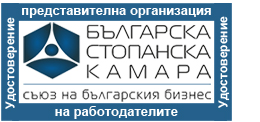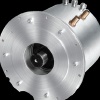Индустриален клъстер "Електромобили" - Учредители:








 |

|

|
| Актуално | За клъстера | Екип | Членове | Документи | Анализи | Услуги | Стани член | Награди | ССЕМ | Контакти |
ИКЕМ - Индустриален клъстер "Електромобили" | Събота, 20.12.2025 | |
|
Automotive Technology: Greener Products, Changing Skills - 2
1. Introduction Making lightweight vehicles is not a new concept. In fact, the use of lighter materials and reduction of parts is a concept that has existed since the inception of the automobile, yet much of the change that has existed over the last 50 years has been incremental. Existing infrastructure and familiarity with physical characteristics of certain materials has limited the range of materials and designs for automotive components. Today, changes in powertrain strategies and emphasis on fuel economy are forcing automakers to make significant changes in material selection and possibly vehicle design methodology. Recent changes to the Corporate Average Fuel Economy (CAFE) are driving automakers to seek more aggressive methods for fuel consumption reductions. Lightweighting of vehicles will be a factor in meeting these requirements due to the inherent relationship between mass and fuel consumption. In addition, lightweighting may benefit other advanced fuel-saving but load constrained technologies, such as battery-powered vehicles. The ability to introduce new lightweight materials into vehicles is not a trivial matter. Many see a new concept, or limited production, vehicle introduced to the market with lightweight “space-aged” materials and feel that adoption by mass produced vehicles is a simple matter of “remove and replace.” However, this is not the case; factors such as existing infrastructure, material cost, and high volume capacity become of great importance for mass production vehicles. In addition, many of the low production vehicles incorporate these lightweight materials as a method for gaining experience on their performance. Without significant data to support durability, the risk-averse automotive culture will not adopt new materials. Therefore it often takes many years to implement lightweight technology in mainstream production vehicles. As new materials are introduced and adopted, the workforce will need to adjust to accommodate the following changes in the industry:
• Greater focus on systems approach to vehicle design
1.1 Methodology
• American Iron and Steel Institute
1.2 Automotive Lightweighting The most obvious benefit is the impact it has on fuel consumption. In fact, it is estimated that a 10 percent reduction in mass will result in a 3 to 7 percent reduction in fuel consumption. |
Продукти 
Комплектна система за задвижване на електромобилиСистемата за електрозадвижване обхваща гама с три основни типоразмера на ел. мощност със съответните компоненти - електромотор и контролер. oще ...Виж всички продуктиАнкета с продължение...
|
|
|
 ЕВРОПЕЙСКИ СЪЮЗ Европейски фонд за регионално развитие Инвестираме във вашето бъдеще |
 |
 ОПЕРАТИВНА ПРОГРАМА „Развитие на конкурентоспособността на българската икономика” 2007-2013 www.opcompetitiveness.bg |
|
Интернет страницата е създадена с финансовата подкрепа на ЕФРР, в рамките на проект „Развитие на Индустриален Клъстер Електромобили” по ДБФП К-02-2/28.09.2011 г. |
|||